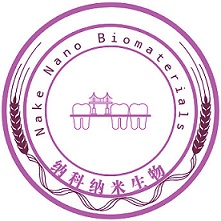P2O5: 38.0~41.0%
CaO: 51.0~55.0%
Suspension degree: 40ml~80ml
Conductivity: ≤150us/cm
Hydroxyapatite (HAP) suspension polymerization dispersant is the most widely used inorganic dispersant in the world.
It is widely used in the suspension polymerization of polystyrene (PS), expandable polystyrene (EPS), ABS resin, polymethylmethacrylate (PMMA) and styrene-acrylonitrile (SAN) beads. It can also be used for Suspension polymerization of polyvinyl chloride (PVC).
This dispersant can make the viscosity of the polymerization reaction system easy to control, and the resin will not stick to the kettle wall and agitator easily. It can extend the kettle cleaning cycle, reduce production costs, and reduce environmental pollution.
At present, most commercially available HAP suspension polymerization dispersants have large particle sizes, wide distribution, low activity, and low dispersibility, resulting in poor quality resin products.
Since the activity of HAP suspension polymerization dispersant is proportional to its specific surface area, foreign researchers generally use ultrafine nanometerization of HAP dispersant to increase its specific surface area to achieve the purpose of improving its dispersion activity.
However, HAP particles are prone to agglomeration after being nanosized, and their dispersion will be reduced.
Therefore, in order to prepare highly active ultra-fine HAP dispersants, surface treatment must be carried out to reduce agglomeration, so the process is complex and the production cost is high.
In order to solve the contradiction between the activity and agglomeration of HAP dispersants, we prepare HAP particles with a porous structure to increase the specific surface area and improve the activity. At the same time, we control the particle size to make it moderate and evenly distributed to reduce agglomeration, thereby preparing high-performance HAP suspension polymerization dispersant with high surface activity, good suspension dispersion and stability.
The porous HAP suspension polymerization dispersant was prepared using a precipitation method, using calcium carbonate and phosphoric acid as raw materials, and using the by-product CO<,2> produced in the reaction as a porogen. No other porogen is added during the synthesis process, and the product only has porous HAP particles and CO<,2> gas. Therefore, the process is simple, the product purity is high, and the obtained HAP particles have a rich pore structure.
The product was characterized by testing methods such as scanning electron microscopy, BET nitrogen adsorption, particle size distribution analyzer, infrared spectroscopy and X-ray diffraction. Comparative experiments on suspension polymerization applications of styrene and SAN were conducted using homemade porous HAP, Japanese HAP and commercially available domestic HAP dispersants.
The results show that the HAP suspension polymerization dispersant prepared under this experimental condition has the crystal structure of hydroxyapatite (Ca<,10>(PO<,4>)<,6>(OH)<,2>); The obtained HAP suspension polymerization dispersant has a porous structure and its specific surface area is 100~110m<'2>/g, which is about 1.5 of the specific surface area of Japanese HAP and commercially available domestic HAP (60~69m<'2>/g) ~1.8 times; it not only has a large specific surface area, low bulk density, but also has uniform particle size, no agglomeration between particles, and high dispersion activity.
The optimal synthesis conditions for this process are: solid content of calcium carbonate aqueous suspension 90g/L, phosphoric acid concentration 1.0mol/L, reaction/aging temperature 50°C, and aging time 3h.
The application test results in styrene suspension polymerization show that the porous structure of HAP has high dispersion activity, excellent suspension dispersion and stability, and can significantly improve the quality of polystyrene beads.
The application results in SAN suspension polymerization show that when the addition amount of dispersant is reduced to 0.3g/100g monomer, the self-made porous HAP dispersant can smoothly carry out the suspension polymerization of SAN, while the dispersion effect of Japanese HAP dispersant is not ideal, indicating that The dispersion of the self-made porous HAP dispersant is higher than that of Japanese products, and it can completely replace imported products as the dispersant for SAN suspension polymerization; and the addition amount of the self-made HAP dispersant is low, which can not only reduce production costs, but also improve The quality of SAN resin.

